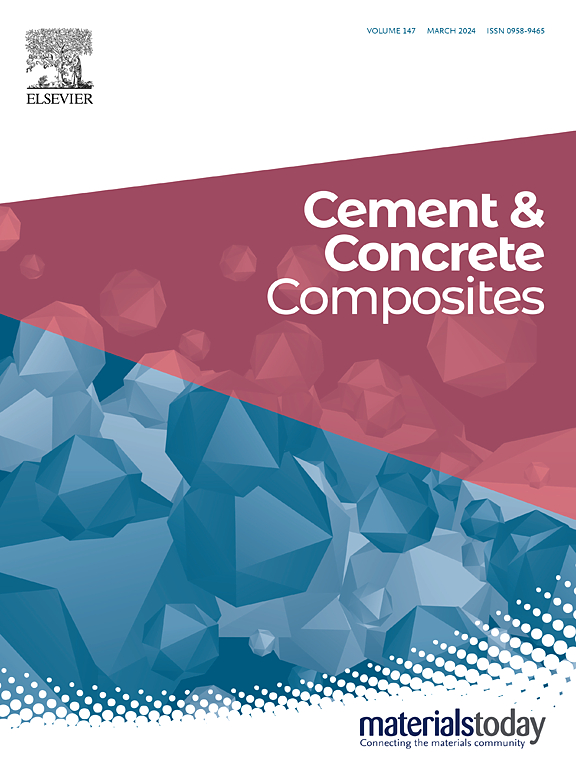Thermodynamical analysis of the impact of chloride-rich environment on the paste mineralogy of magnesium phosphate cement
IF 10.8
1区 工程技术
Q1 CONSTRUCTION & BUILDING TECHNOLOGY
引用次数: 0
Abstract
Magnesium phosphate cement (MPC) is commonly used as rapid repair materials for damaged pavements. MPC together with pavements usually undergoes de-icing salts exposure in winter. However, the deterioration mechanism of MPC under chloride attack remains unclear. A thermodynamic simulation approach was employed to investigate the deterioration mechanism of MPC. The results revealed that compressive strength loss decreases with the increase of the concentration of the NaCl solution. Basic magnesium chlorides cannot be formed in MPC immersed in NaCl solutions. The formed MgNH4PO4·6H2O, MgKPO4·6H2O and part of the residual magnesia can dissolve in NaCl solution, facilitating the precipitation of NH4NaMg2(PO4)2·14H2O, KNaMg2(PO4)2·14H2O and brucite in MPC. Due to the precipitation of NH4NaMg2(PO4)2·14H2O and KNaMg2(PO4)2·14H2O, the volume of solid phases increases slightly and then decreases under chloride attack. NH4NaMg2(PO4)2·14H2O and KNaMg2(PO4)2·14H2O are more soluble in concentrated NaCl solution, leading to the solid volume decrease of the hardened binder phases of MPC.
富氯化物环境对磷酸镁水泥膏体矿物学影响的热力学分析
磷酸镁水泥(MPC)是一种常用的路面快速修复材料。MPC与路面在冬季通常经历除冰盐暴露。然而,MPC在氯化物侵蚀下的变质机理尚不清楚。采用热力学模拟方法研究了MPC的劣化机理。结果表明,抗压强度损失随NaCl溶液浓度的增加而减小。浸在NaCl溶液中的MPC不能形成碱式氯化镁。形成的MgNH4PO4·6H2O、MgKPO4·6H2O和部分残镁在NaCl溶液中溶解,有利于MPC中NH4NaMg2(PO4)2·14H2O、KNaMg2(PO4)2·14H2O和水镁石的析出。由于NH4NaMg2(PO4)2·14H2O和KNaMg2(PO4)2·14H2O的析出,固相体积在氯离子侵蚀下先增大后减小。NH4NaMg2(PO4)2·14H2O和KNaMg2(PO4)2·14H2O更易溶于浓NaCl溶液,导致MPC硬化黏结相固相体积减小。
本文章由计算机程序翻译,如有差异,请以英文原文为准。
求助全文
约1分钟内获得全文
求助全文
来源期刊

Cement & concrete composites
工程技术-材料科学:复合
CiteScore
18.70
自引率
11.40%
发文量
459
审稿时长
65 days
期刊介绍:
Cement & concrete composites focuses on advancements in cement-concrete composite technology and the production, use, and performance of cement-based construction materials. It covers a wide range of materials, including fiber-reinforced composites, polymer composites, ferrocement, and those incorporating special aggregates or waste materials. Major themes include microstructure, material properties, testing, durability, mechanics, modeling, design, fabrication, and practical applications. The journal welcomes papers on structural behavior, field studies, repair and maintenance, serviceability, and sustainability. It aims to enhance understanding, provide a platform for unconventional materials, promote low-cost energy-saving materials, and bridge the gap between materials science, engineering, and construction. Special issues on emerging topics are also published to encourage collaboration between materials scientists, engineers, designers, and fabricators.
 求助内容:
求助内容: 应助结果提醒方式:
应助结果提醒方式:


